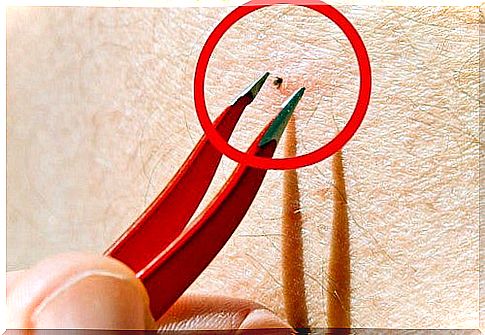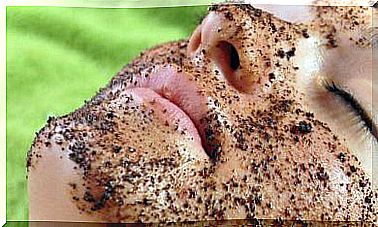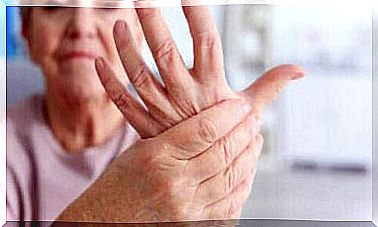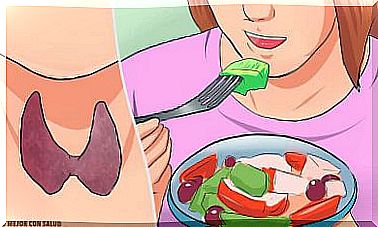Sign: A Danger To Both Animals And Humans

Ticks are parasites belonging to the Ixodida family. They can transmit all kinds of infections and diseases through the bloodstream. You can find them in grass, shrubs and undergrowth. Here they wait for a passing host to grab onto.
The damage that ticks can inflict on animals can be very serious. Babesiosis and Ehrlichiosis, for example, can lead to chronic anemia in dogs. This, if left untreated, can lead to death.
Because ticks thrive in warm and humid places, they like to settle in animals such as between the legs, behind or in the ears or in the groin.
How to keep ticks away
To combat ticks in animals , you should wash the animal every week with medicated shampoo. Also make sure that you clean or smoke out the room where the animal sleeps every 2 weeks. This is in case ticks have released and/or laid eggs.

Be careful not to use too much poison to eradicate the tick. That way you run the risk of poisoning the animal as well.
Ticks can also transmit diseases to humans. Here are some of the most common:
Lyme disease
Ticks can carry Lyme disease if they attach themselves to already infected animals. Lyme disease occurs in Europe, Asia and the United States and can affect both animals and humans.
In its early stages, Lyme disease has not yet spread in the body. As a result, it is often easy to treat with antibiotics. However, in the second stage, the disease begins to spread, and in the third stage, the disease is often throughout the body.
The longer the tick remains on the body undetected, the greater the chance that someone will become infected with Lyme disease. Some ticks, such as black-legged ticks, are so small that people often don’t even realize they’re on their bodies.
Symptoms of Lyme disease include:
- General reduced energy
- Fever
- muscle strain
- Headache
In the third stage , the disease can also cause prolonged joint pain, cardiac arrhythmias and nervous system problems.
Frühsommer meningoenzephalitis (FSME)
FSME is a neurological disorder that causes symptoms in two-thirds of infected people. Although most people make a full recovery from it, it leads to meningitis or encephalitis in some patients. These are serious nerve and brain infections. The condition occurs in Europe and Asia.
Symptoms include:
- Fever
- Headache
- languor
- muscle strain
- Nausea
Rocky Mountain Spotted Fever
This disease is caused by a bacteria. The tick generally needs to be attached to the body for at least 20 hours to transmit the disease.
This disease is mainly spread by ticks in the United States, Central and South America.
Symptoms include:
- Fever
- Headache
- Chills
- muscle strain
- Confusion
Tick Paralysis
Some tick bites can cause paralysis in children, frail people and the elderly. This is the only disease that ticks can transmit that is not an infection. Tick saliva contains a neurotoxin that can cause paralysis in some people.
Symptoms include:
- A tingling feeling
- Weakness
- Loss of coordination
- Instability when walking
Tularemia
This disease is fatal in 5% of untreated cases. Tularemia mainly occurs in North America, Europe and Asia and can be transmitted by tick bites, among other things.
Symptoms include:
- Headache
- Fever
- Chills
- muscle strain
- weight loss
- Problems with breathing
Tularemia is a serious disease and can lead to pneumonia, pericarditis (inflammation of the pericardium), osteomyelitis (inflammation of the bone), and meningitis (inflammation of your nerves).
How to remove a tick
Pinch a tick by the head (not the body) with tick tweezers or tweezers and gently pull it out. Make sure to remove the head completely and then don’t crush the tick on the ground. Blood and eggs can be spread in this way.
It is not a good option to rub some iodine, alcohol or paraffin over the tick so that it comes off on its own, as this will irritate the tick. After removal, you can use this to disinfect the wound.
Remember…
- Use gloves or cover your hands with a paper towel.
- Wash the skin around the tick and your hands with soap and water.
- If you are unable to remove the head of the tick, consult a doctor.
- Keep the tick in a closed can in case any of the aforementioned symptoms occur.
Prevention is better than cure
- When walking through tall grasses, ornamental grasses, or bushy areas, wear long pants and a long-sleeved sweater.
- Do not wear open shoes.
- Dress in light colors so that it is easier to spot ticks.
- Spray your clothes with bug spray.
- Tuck your sweater into your pants.
- Watch your pets closely and check them regularly to see if they have ticks on them.









